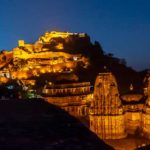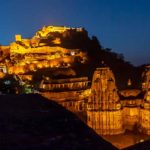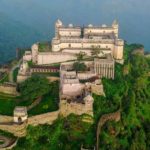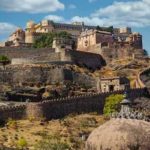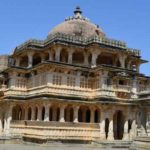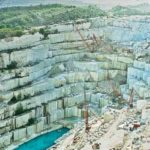Top Things to Do In Kumbhalgarh is a beautiful city in the Rajsamand district of Rajasthan and it consists of the second most important fort of Mewar Rulers of Rajasthan after Chittorgarh. The city is famous for its vibrant cityscapes, giant fortresses, and is considered as a gem in Rajasthan’s Royal cap. Kumbhalgarh tourism boasts numerous attractions that proudly represents the magical and historical past of the city.
The vibrant town is renowned for beautiful mountains, royal palaces and wide array of temples and lot more that attracts thousands of visitors from all corners of the world. And one of the major highlights of Kumbhalgarh tour packages is the wildlife sanctuaries of offering interesting lion safari tours with rich flora and fauna.
The wall of Kumbhalgarh fort is the second longest wall in the world after the Great Wall of China and hence all of these together make Kumbhalgarh as one of the most popular places to visit in Rajasthan. The royal fort of Kumbhalgarh is situated at a distance of 64 kms from Udaipur in Rajsamand district and it is easily accessible from the Udaipur City. The magnificent fort was built in 15th century by Rana Kumbha and it is elevated by thirteen mountain peaks, and seven giant gateways that stand in the front of the fort. The largest gate is Ram Pol Gate which is a unique piece of attraction Top Things to Do In Kumbhalgarh.
And interestingly the fort is also known for its famous palaces that inhabit on the top of structure. This enormous palace is also known as Badal Mahal as it has beautiful rooms with lovely presentable colors which is a great combination of green, turquoise and earthy colors of the fort, and hence this palace gives the appearance of being wandering in the world of clouds. The Badal Mahal also offers incredible panoramic viewsof the Kumbhalgarh attractions.
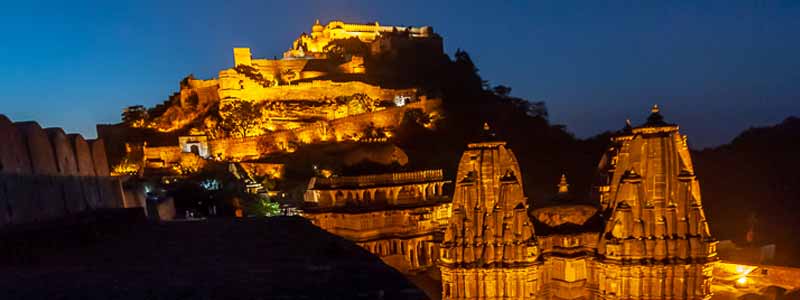
Kumbhalgarh: A Brief History
This majestic fort dates back to the rich Mewari dynasty in Udaipur. Specifically, it was located in the Rajasamand district in the West range of the Aravalli Mountains. Rana Kumbha reportedly built this fort in the 15th century, and it was designed to keep out marauding armies. However, some historians believe that the fort was originally built in the 6th century by King Samprati at the same site. But this fort was pulled down, and the current iteration is said to have been built by Rana Kumbha. He named it after himself, as was the fashion of the day Top Things to Do In Kumbhalgarh.
In all, this king had 84 forts in his kingdom and he built 32 of them himself. However, none of the others were as large or elaborately planned as Kumbhalgarh Fort. There is a famous legend that also speaks of the king’s generosity – the story goes that the King would order many kilograms of ghee and cotton to be kept burning inside massive lamps, to provide light to farmers working in their fields at night. The lamps would be placed along the external sides of the walls.
The fort was largely successful in keeping enemies out, and could not be occupied till the late 19th century came around. It was finally occupied by the British, who used it as a watchtower and for storing ammunition. Today, the fort is opened for viewing to the general public and is no longer used for Government purposes.
Located about 82 km from Udaipur city, the fort is recognised as a heritage structure by UNESCO and is a protected monument. Historically it is as important as the Mewar Fort in Rajasthan and second in size only to the Chittor Fort. The fort is actually a large complex – it is recognised as one of the largest complexes in the world.
The fort is built atop a hill, over 1000 feet above sea level in the Aravalli Mountain range. It has one of the longest walls of any fort in the world, going as far as 36 km! In proportion, the external walls are 15 feet thick. There are many structures inside the fort, such as temples, large water tanks, plinths decorated with idols of Hindu gods, and so on Top Things to Do In Kumbhalgarh.
The Government annually hosts the Kumbhalgarh Festival for three days inside the fort, to celebrate the spirit of Rana Kumbha and his foresight in building the fort.
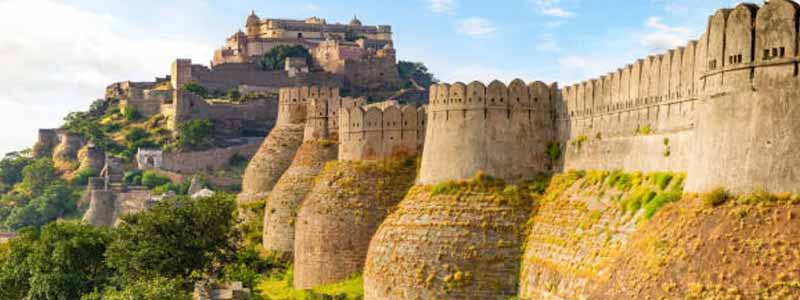
Attractions & Places To Visit And Explore In Kumbhalgarh
The fort includes various important buildings to see such as Badal Mahal, the birthplace of Maharana Pratap and Hindu and Jain temples. Top Things to Do In Kumbhalgarh The main fort and its ramparts are made of strong stone, due to which the main fort still stands firmly with time.
Kumbhalgarh Fort:
Kumbhalgarh Fort is a fortress of Mewar on the west side of Aravalli Hills, in the Rajsamand region of Rajasthan in west India. It is perceived and popular for being a World Heritage Site situated in Rajasthan’s Hill Forts and is considered as one of the most popular places to visit in Rajasthan. During the fifteenth nineteenth-century Kumbhalgarh was established and extended by Rana Kumbha, and is likewise the origination of MaharanaPratap, the incredible lord, and warrior of Mewar.
Involved until the late nineteenth century, the fortification is presently open to people in general and lit up astoundingly for a couple of moments each night. Kumbalgarh is located by road at 82 km northwest of Udaipur. After Chittaurgarh, it is the most powerful fortress in Mewar Top Things to Do In Kumbhalgarh.
Kumbhalgarh Wildlife Sanctuary:
Kumbhalgarh Wildlife Sanctuary is in Rajsamand, Rajasthan district. It possesses an absolute region of 578 sq km and spreads through the Aravalli ranges, surrounding portions of Udaipur, Rajsamand, and Pali. The asylum of natural life incorporates the noteworthy fortification of Top Things to Do In Kumbhalgarh and is named after the post. This sloping, thick woods of Kumbhalgarh will end up being charming amazement to the individuals who consider Rajasthan a desert state. The park’s green tract forms a dividing line between Rajasthan’s two separate parts; Mewar, and Marwar.
Badal Mahal:
Also part of the principal fort is the Badal Mahal. It is divided into two sections: Zanana and Mardana Halls, respectively for ladies and men. Both of these parts’ architecture is impressive. The view from the top of the tower over the surrounding area is also spellbinding.
Neelkanth Mahadeo Temple:
The Temple of Neelkanth Mahadeo is within the vicinity of the fort. This is dedicated to Lord Shiva, whose Lingam is in the temple at 6 feet. This deity is one of the very few that the locals venerate and maintain.
Mammadev Temple:
This temple is situated just below Fort Kumbhalgarh. It had four large inscription slabs on it but these were moved to the Udaipur museum. It currently has a few cenotaphs honoring the Raja, Raja Kumbha, and Prithviraj Chauhan fortress of Top Things to Do In Kumbhalgarh. Next to the temple also there is a large water reservoir.
Vedi Temple:
Arranged inside the Kumbhalgarh Fort premises at Hanuman Pol in Kumbhalgarh, Vedi Temple is a regarded Jain asylum overseen by the close by god Goddess Vedi. The haven worked in an octagonal shape, stays on 36 segments, and was worked by Rana Kumbha in memory of the pioneers’ retribution. It was later restored by MaharanaFateh Singh. And it is also just a site of sacrifice that is present in the whole country. Maintained and protected by India’s Archeological Survey, the temple has revered positivity and divinity and is also one of the region’s most visited attractions.
Parshuram Temple:
The Temple of Parshuram is a temple in the cave that Lord Shiva enshrines. The Hindu sage Parshuram is believed to have stayed at this spot and meditated here. Lord Ganesh’s object of worship, other than Lord Shiva, likewise exists and has nine kunds that never run dry. A 500-steps way brings you down to the sanctuary, which is pretty much like a walk. The temple also provides enchanting views of the surrounding Aravalli Mountains and is a popular spot for nature lovers and visitors alike Top Things to Do In Kumbhalgarh.
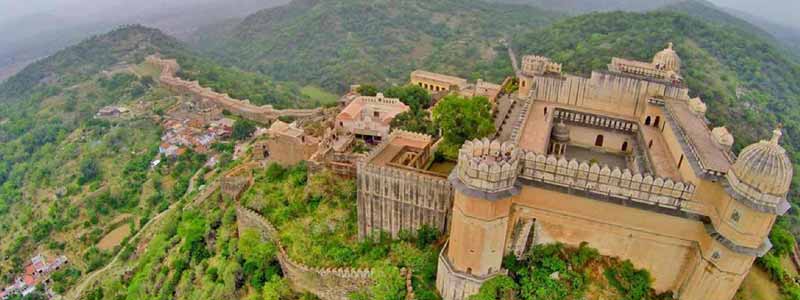
The Best Time to Visit Kumbhalgarh
Being in a desert region, Kumbhalgarh is normally not visited in the summer season. The summer is hot and arid, and sightseeing in this weather is often not advisable. Young children, pregnant women, senior citizens and those suffering from respiratory and skin allergies would do well to avoid this season altogether.
When it comes to the monsoon season, there are scanty rain showers in this area, and the temperature falls at first. However, after the rain shower has gone and the ground has dried, the humidity increases and you can feel uncomfortably hot. This season is not too conducive weather-wise, but there are less tourist footfalls so you can move about in relative peace. You can easily get hotel and resort bookings, and the tariffs at the best restaurants in Top Things to Do In Kumbhalgarh may have also been reduced. And yet, the area comes alive with the fresh rainfall and everything looks fresh and beautiful.
How To Reach Kumbhalgarh
There are three ways to reach Kumbhalgarh, namely:
- By Air: Kumbhalgarh does not have its own airport. The nearest airport is at Udaipur, the Dabok Airport. The airport is about 66 km away from Top Things to Do In Kumbhalgarh. Once you alight here, you can take a cab or have your resort pick you up in a car.
- By Road: Kumbhalgarh does not have its own bus stand, with the nearest one being located at Nathdwara 36 km away. You can take a bus to this stand and then look for an autorickshaw or taxi to take you to your hotel or resort. Some people prefer to drive in from Udaipur as well.
- By Railway: There is no railway station or rail head at Top Things to Do In Kumbhalgarh. The nearest rail head is at Rani, about 35 km away. There are weekly trains plying from other cities in Rajasthan to Rani station. Look up an updated Kumbhalgarh tourism guidebook to know the right train and route from your hometown.

